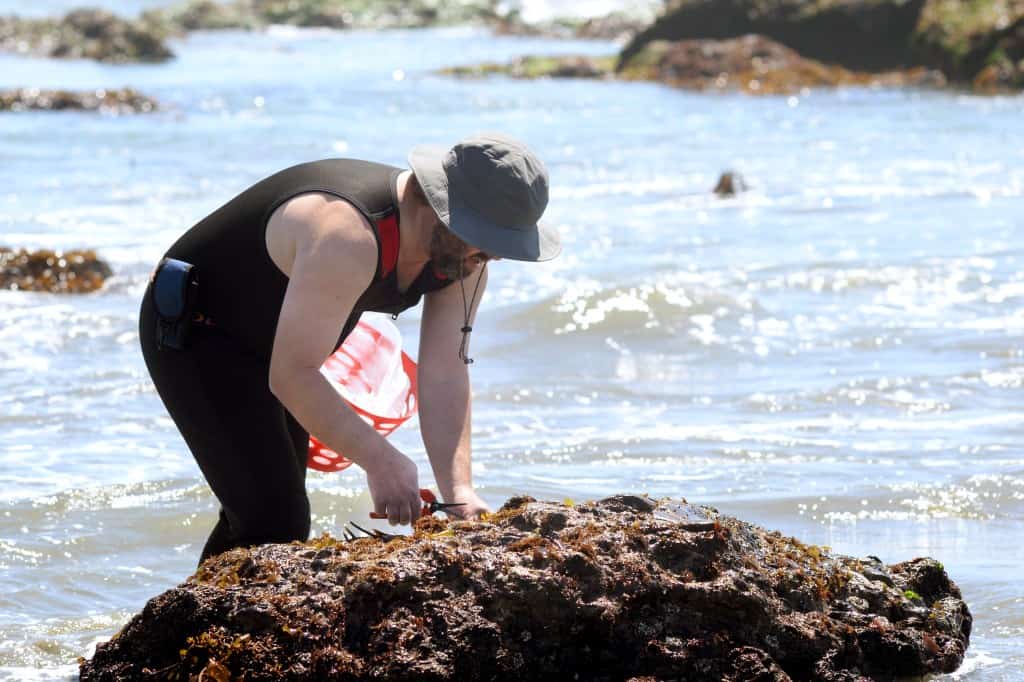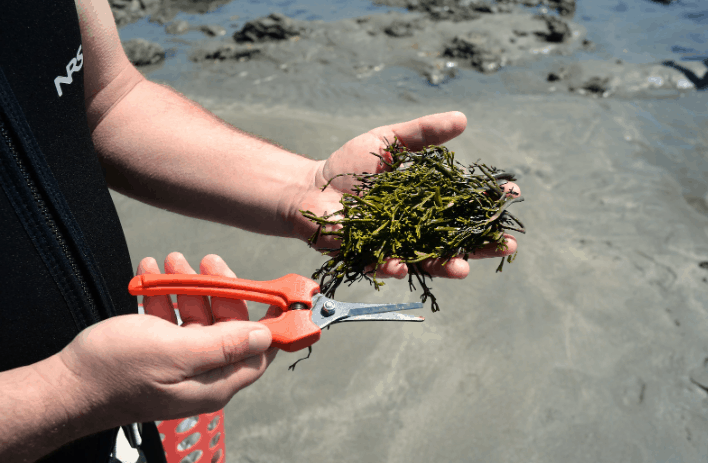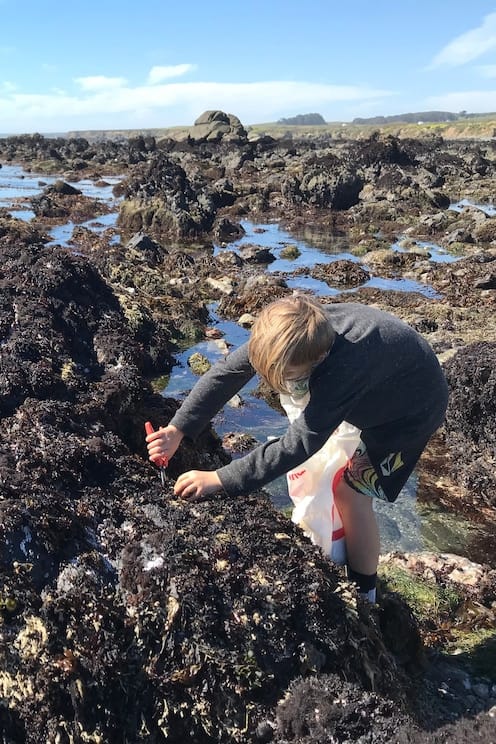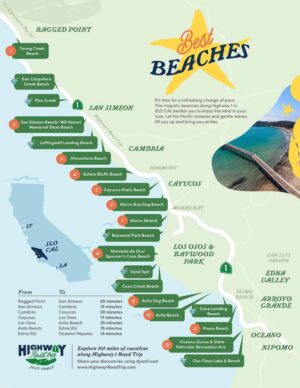From Iona Brannon at Condé Nast Traveler
The weather was perfect, with the warmth of the sunshine offsetting the salty sea breeze. It was a great day for foraging on the central coast of California. We were on the hunt for the sea’s briny bounty: seaweed.
Spencer Marley, a former commercial fisher and seaweed harvester, has been taking people on seaweed foraging excursions for nearly half a decade. The San Luis Obispo County Airbnb Experience is rated a solid five stars, and as a huge fan of seaweed, I was eager to get out there and learn more.

“The good thing is that there’s no toxic seaweed in the world,” Marley stated unprompted at the beginning of our experience, as if he could read my morbidity-prone mind. Unlike foraging for mushrooms, he said, misidentifying seaweed would not lead to death.
I dutifully followed his footsteps along the coastline by Cayucos, dodging the waves that crashed against the rocky landscape. Marley was a wealth of information, explaining that the central coast was especially fruitful for this activity because we were at the meeting ground of seaweed varieties from both the northern and southern shores of California.

Marley didn’t invent seaweed foraging, nor did he try to claim the title. Instead, he narrated a history of the area’s foragers, referencing Chinese immigrants from the 1800s who were the first documented seaweed foragers on the central coast.
As we walked along the coastline, Marley pointed out different varieties of seaweed and what they were popular for.
“This is nori, and 93 percent of seaweed consumed in the world is nori,” he said. “The Cantonese were the first to figure out it was edible 2,000 years ago. Not only would they harvest it from the wild and eat it, but it was also one of the first forms of aquaculture.”
He leaned in to snip the tips growing off a rock, leaving the majority of the algae intact so that it would retain potential to regenerate. Then we continued on. With some varieties, we weren’t snipping at all. Instead, we’d gather the bits of seaweed battered in by the waves. “Kombu is a deep-water seaweed, and it’s the highest natural food source of glutamic acid in the world,” Marley said. “This is enough to flavor our ramen.”
There were some lookalikes, but Marley showed me the subtle visual and flavor differences that differentiated them. Kombu has an almost mushroom-like umami taste while its lookalike Alaria has a less appealing flavor that tastes a little like cardboard.
With almost every new type of seaweed he’d introduce me to, he’d be sure to add, “That’ll go in our ramen.” I could just imagine the flavors we’d be cooking up, from the citrus flavors of Rockweed and the floral hints of the Splendid Iridescent to the crunch of the Ogo. By the end, my stomach was growling for a taste, and our little basket was looking bountiful.
Marley played the role of Mary Poppins and pulled out a portable stove from his backpack, along with a pot, bottles of clean water, packets of noodles, onions, and garlic. Skepticism began to creep into my mind. Would the ramen be any good?
We continued to chat as the water simmered to a boil, and Marley told me about how his mindset had shifted over the years when it came to the earth’s resources. With more than 1,200 days at sea as a commercial fisherman, his ties to the ocean are deep.
“The lightbulb kind of went off when I was at a farmer’s market one time,” Marley told us. “I could totally harvest kelp and dry it out and get a permit because I knew how the whole process worked from fishing. At that time, five years ago, there were only 20 people in the state who had the permit and most of those people were up in Mendocino.”
However, it wasn’t until he got older that he became more concerned with conservation.
“I don’t just want to take, take, take,” he said, slicing a long strip of Kombu seaweed into smaller bites.
Now, his priority is to teach people how to be more conservation-minded, one bowl of ramen at a time. And his Airbnb Experience description was right: He could make a mean bowl of seaweed ramen. I found myself tipping the bowl upside down, determined to slurp every drop of seaweed-y goodness.
While the activity was only supposed to last 90 minutes, Marley sheepishly admitted that going over was a frequent occurrence. Beyond a foraging experience, guests also get a history and sustainability lesson with Marley, and as a therapist in training, he was particularly skilled at thoughtful conversation. Through the experience, I learned so much about the science and history of seaweed as well as the importance of harvesting sustainably. There was also plenty of leftover seaweed from our foraging experience, and I was able to take home a bag of my own.

Read the full article on Condé Nast Traveler.



